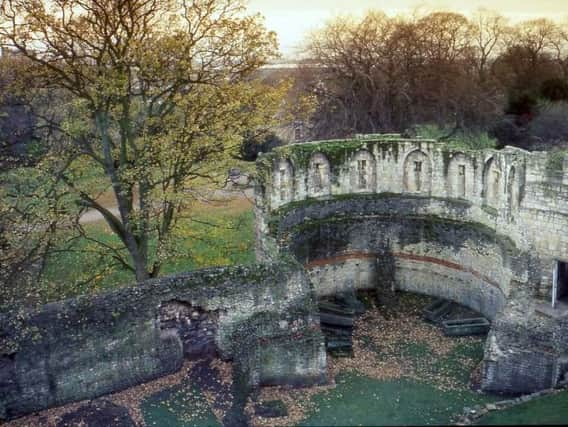Porta Decumana: Everything we know about the hidden Roman gateway in York that could soon be revealed


The Porta Decumana vanished to history when York's medieval city walls were constructed on top of it.
Excavations could begin in three years time, and could reveal fascinating details about York's settlement before the Roman invasion had even taken place.
Advertisement
Hide AdAdvertisement
Hide AdExperts have long been puzzled about what the land was used for before AD71, when Roman forces built a fort around the Ouse.
The site is thought to be beneath a rampart of the walls on Lord Mayor's Walk, opposite Groves Lane.
Archaeologists have identified undulations that suggest parts of the gateway could be intact below the ground.
What was it?
The gate acted as the 'back door' into the Roman fort of Eboracum from the first until the fifth centuries.
Advertisement
Hide AdAdvertisement
Hide AdAfter Roman occupation ended, it continued to be used for passage until around 1250, when the medieval Monk's Bar replaced it. It was then buried or dismantled.
It's thought that the first floor of the building could be preserved, along with the remains of a passageway.
The story of the mutilated bodies of Wharram PercyHow big was the Roman fort and where were the other entrances?
The fort occupied around 50 acres, with the site of York Minster at its centre. It was home to the Ninth Legion, who had marched from Lincoln to set up the camp.
Advertisement
Hide AdAdvertisement
Hide AdThe main gate was called the Porta Praetoria, and was on the south-west side, along the river. This led to a bridge across the Ouse, and several roads converged here. There was also a north-west entrance, roughly where Bootham Bar is now. The south-east gate faced the Foss, where there were wharves for trade. The Porta Decumana lay to the north-east, and roads leading to Malton and the coast began there.
The later street pattern followed that of the Roman roads through the fortress. Stonegate represents the Porta Praetoria, and Chapter House Street the Porta Decumana. The headquarters of the garrison are thought to have been near Petergate, beneath the Minster site.
The Sixth Legion later occupied the fort until the end of Roman rule.
Newburgh Priory: The Yorkshire country house where Oliver Cromwell is buriedWhat remains can be seen today?
Advertisement
Hide AdAdvertisement
Hide AdParts of the defences can be seen, but the main evidence is the bath-house under the Mail Coach Inn in St Sampson's Square. Everything else is buried or has been destroyed.
The Multangular Tower in the Museum Gardens is a surviving section of Roman wall.